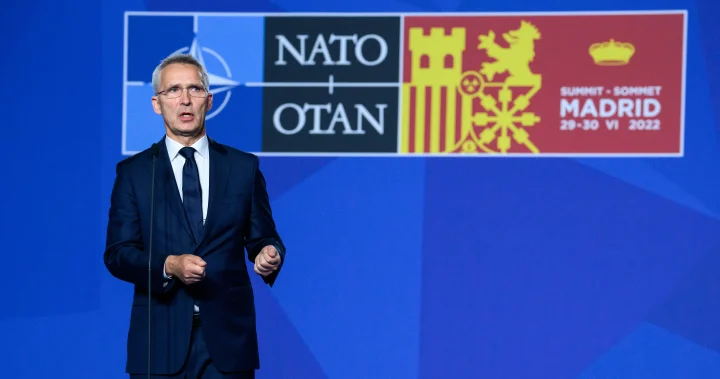NATO aims to cut emissions by 45% by 2030, be carbon neutral by 2050

NATO aims to cut its civilian and military greenhouse gas emissions by at least 45% by 2030 and be carbon neutral by 2050, Secretary-General Jens Stoltenberg said on Tuesday as he announced the first emissions targets for the organisation.
“It will not be easy but it can be done,” he said in a speech on the sidelines of the NATO summit in Madrid.
By committing to eliminate its net greenhouse emissions by 2050, NATO aligns the alliance with the pathway to deliver the Paris Agreement’s goal of limiting global warming to 1.5 degrees Celsius (34.7°F).
The NATO targets refer to the alliance’s own assets such as its AWACS surveillance planes, its drones based in Italy and its headquarters in Brussels as well as military headquarters in other places like Mons (Belgium), Naples (Italy) or Brunssum (the Netherlands).
At the same time, NATO also seeks to help allies in reducing their national militaries’ carbon footprints.
But military emissions are often exempted from countries’ carbon emissions targets, and the U.S. Department of Defense, for instance, is the world’s single largest consumer of petroleum, according to research in 2019 by Neta Crawford at Boston University.
A study commissioned by the European Parliament calculated in 2021 that the carbon footprint of EU militaries in 2019 was about 24.8 million tonnes of carbon dioxide equivalent – about the same as the CO2 emissions from about 14 million cars.
See related article: Jacksonville Jaguars, PureCycle Team Up to Help Stop Over Half a Million Pieces of Plastic from Entering Our Environment
A main battle tank such as Germany’s Leopard 2 guzzles 400 litres (106 gallons) of diesel in the field to cover just 100 km (62 miles), according to an insider who declined to be named.
Stoltenberg said reducing military emissions would not only help the environment but also improve military vehicles.
“I believe that in the future, the most advanced military vehicles, and the most resilient armed forces, will be those that do not rely on fossil fuels,” he said.
Reporting by Sabine Siebold, Inti Landauro and Andrei Khalip, editing by Andrei Khalip, Charlotte Van Campenhout, William Maclean
Source: Reuters












